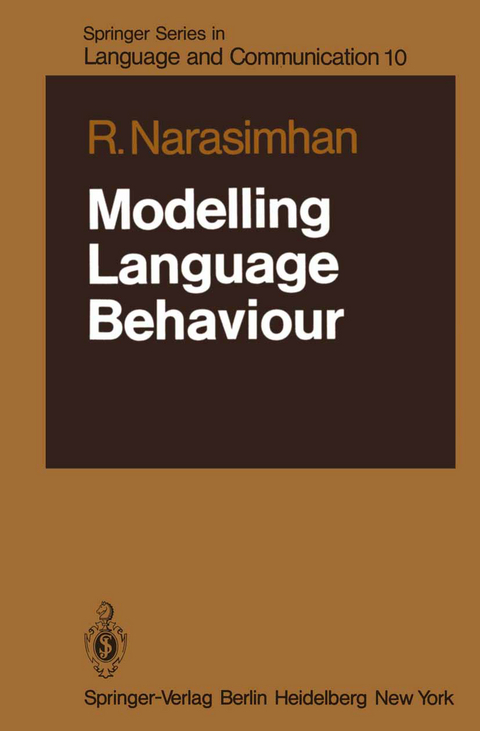
Modelling Language Behaviour
Springer Berlin (Verlag)
978-3-642-67936-0 (ISBN)
1 A Framework for Modelling Behaviour.- 1.1 Preliminary Remarks.- 1.2 The Nature of Scientific Activity.- 1.3 Explanations in the Physical and the Behavioural Sciences.- 1.4 The Need for a New Experimental Framework.- 2 The Mediating Role of Language Behaviour.- 2.1 Human and Animal Communication Systems.- 2.2 Organism as a Behavioural System.- 2.3 Language Behaviour as a Second-Signalling System.- 3 Teaching Language Behaviour to Chimpanzees.- 3.1 Principal Objectives of the Review.- 3.2 The Washoe Project.- 3.3 The Sarah Project.- 3.4 The Lana Project.- 3.5 General Comments on the Chimpanzee Language Learning Experiments.- 4 Language Behaviour Schemata and Tokens in English.- 4.1 Language and Behavioural Pragmatics.- 4.2 Schemata for Descriptions.- 4.3 Schemata for Commands.- 4.4 Schemata for Controls.- 4.5 Concluding Comments.- 5 Implications of the Model for Child Language Acquisition.- 5.1 Scope of the Chapter.- 5.2 The Language Acquisition Phenomena.- 5.3 Developmental Stages in Language Acquisition.- 5.4 The Language Acquisition Process.- 5.5 Linguistics and Language Behaviour.- 6 Computer Simulation of Language Behaviour.- 6.1 Relevance of Computer Simulation to Theory Construction.- 6.2 Interpretation Assignment in Grammar-Based Models.- 6.3 PLAS, a Paradigmatic Language Acquisition System.- 6.4 Modelling Conversational Language Behaviour.- 6.5 Concluding Remarks.- Appendix A Listing of Schemata in Helen's Speech.- Appendix B Listing of Tokens in Helen's Speech.- Appendix C PLAS: An Illustration of Its Performance.- References.- Author Index.
| Erscheint lt. Verlag | 7.12.2011 |
|---|---|
| Reihe/Serie | Springer Series in Language and Communication |
| Zusatzinfo | XVI, 220 p. |
| Verlagsort | Berlin |
| Sprache | englisch |
| Maße | 155 x 235 mm |
| Gewicht | 370 g |
| Themenwelt | Naturwissenschaften ► Physik / Astronomie ► Mechanik |
| Schlagworte | Behavior • Behaviour • language • Modelling • Sprachpsychologie • Structure |
| ISBN-10 | 3-642-67936-6 / 3642679366 |
| ISBN-13 | 978-3-642-67936-0 / 9783642679360 |
| Zustand | Neuware |
| Haben Sie eine Frage zum Produkt? |
aus dem Bereich


